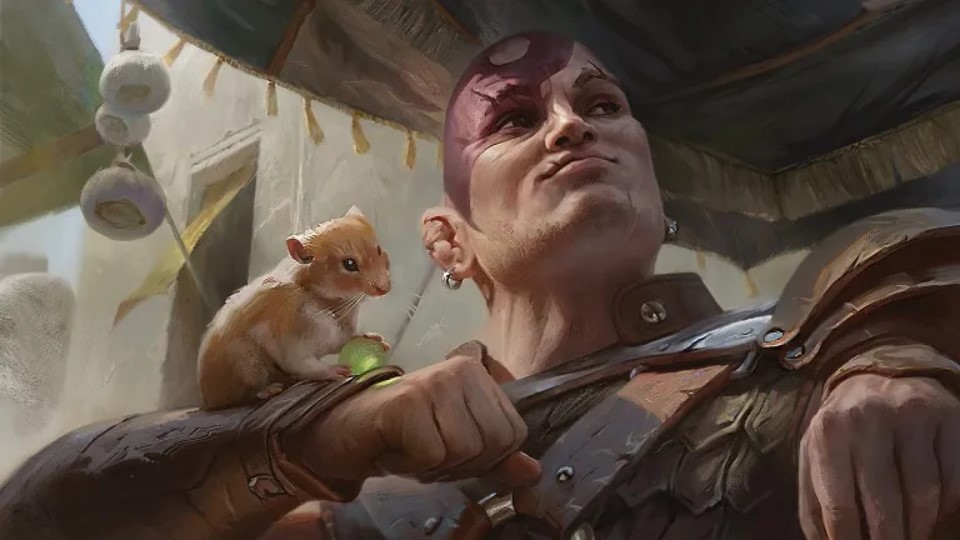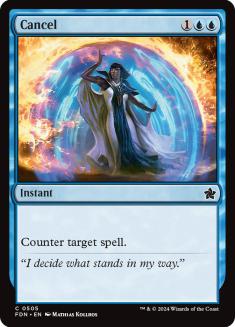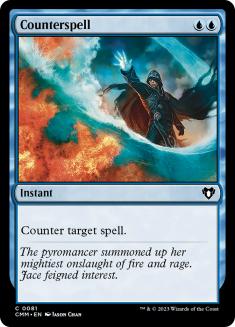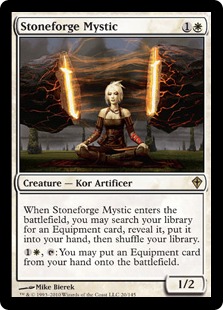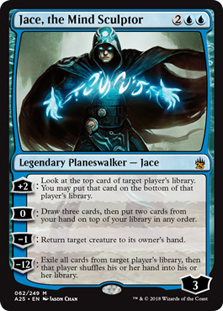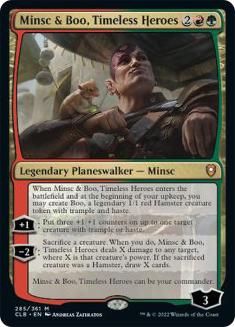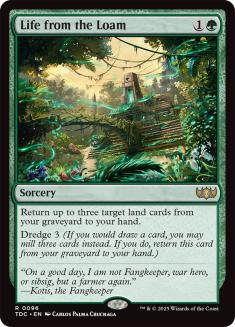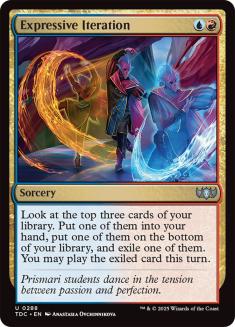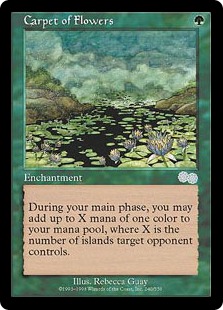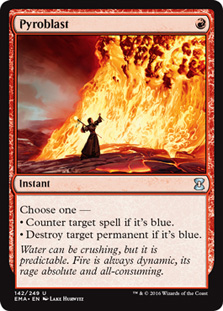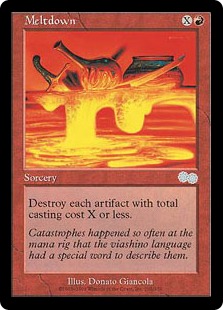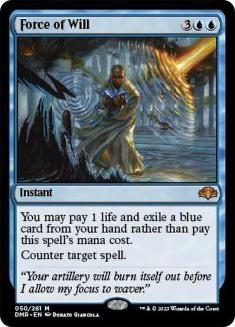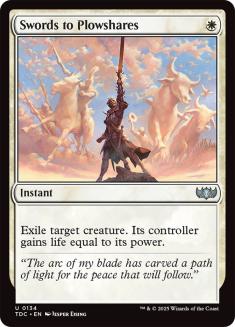There have been reports of control’s demise in competitive play. This is not breaking news, as opponents of the superior archetype have always spread this misinformation. It is true that creatures have taken over as the most powerful card type, but that does not mean control cannot compete. We have always found ways to remain competitive, regardless of the reduction in power of blue disruption, removal, and our win conditions.
Standard has been the area where control struggles in consistency. It is still a viable archetype to pursue, but there is a clear uphill battle due to the shift in design thinking. I have conceded that fact over the years, even though I think I could make it work if Standard returns to paper competition. When the Standard Pro Tour arrives, you will see increased motivation on my part to be successful in that event. Outside of Standard, control is fine to register for any event.
Modern Control at SCG CON
If this power creep corrupts newer formats, it would make sense that control’s haven is in the older formats. In Modern, arguably the most popular competitive format currently, control is alive and well. I wrote about Azorius Control a couple of weeks ago and how it will be my weapon of choice in New Jersey this weekend at SCG CON. Azorius Control has the appropriate power level of disruption, card draw, win conditions, and consistent mana, making it a strong contender in every event.
It is always good to have a backup plan. If the main event does not go well this weekend, I may not want to play another Modern tournament immediately after. At SCG CON in Syracuse, I did run back the 5K with Azorius Control because my main event losses were self-inflicted. It panned out, and I cruised into a Top 8, where I promptly split prizes and drove home. If the event this weekend has losses that are deck/build-related, I will be dusting off my Brainstorms and charging right into Legacy.
Control in Legacy
Legacy is easily my favorite format to play. I do not write a lot of content on it, nor do I talk about it much, for a good reason. With my busy schedule, I have exactly enough time to prepare for specific events and formats, leaving Legacy on the back burner most of the time. I have always wanted to play in a Legacy Pro Tour or resurrect the split formats of the old SCG Invitationals, but that’s simply not in the cards. The best I have these days is to prepare for the Legacy 5K, just in case Azorius Control does not cooperate this weekend.
The last competitive Legacy event I played in was many years ago. In this SCG Open, I made the Top 8 with Grixis Control, marking the end of the Esper Stoneblade era. From 2011-2017, I played Esper and Azorius Stoneblade exclusively, finding myself in five consecutive SCG Invitational Top 8s, a few SCG Open Top 8s, and my only SCG Open solo victory. As you all can imagine, it was difficult to put down the blade for anything. It took some new developments to make the deck too weak to compete, even though my “friends” were berating me for years to let it go. Sadly, there is nothing I can tweak to make the deck competitive, and a new control direction is required.
My Four-Color Control List
Creatures (5)
Planeswalkers (4)
Lands (22)
Spells (29)
- 4 Brainstorm
- 1 Counterspell
- 4 Force of Will
- 4 Swords to Plowshares
- 1 Pyroblast
- 1 Life from the Loam
- 4 Ponder
- 4 Expressive Iteration
- 4 Prismatic Ending
- 2 Dress Down
Sideboard

Four-Color Control is not a new phenomenon in Legacy and has had some success over the last year. Red and green add certain elements that control requires to be successful in the current Legacy metagame. The substance of the deck is similar to the Azorius Control and Stoneblade decks of old, since very few cards can come through and dethrone them. Sword to Plowshares is still the best removal spell, while Brainstorm is the king of card draw. With these constants, there are some benefits that the other colors bring that we must take advantage of.
Timeless Heroes
Stoneforge Mystic and Jace, the Mind Sculptor are not the sturdy win conditions they used to be. The latter still sees some play in Legacy control decks, but I am unsure why. Minsc & Boo, Timeless Heroes is the far superior planeswalker for that cost. It saddens me to say things like this, since Jace is my favorite card of all time. Resolving a Minsc & Boo immediately causes distress in the opponent, ending the game in a couple of turns. Jace could do the same; however, it is not as consistent of a finisher than Minsc & Boo. For this reason, my favorite card in all of Magic hits the bench in favor of this blasphemous Gruul option.
Nature’s Wrath
The addition of red and green also admits Uro, Titan of Nature’s Wrath. This mistake of a printing saw extensive play in Legacy when Arcum’s Astrolabe and Wrenn and Six ran amok. Since their respective bannings, it saw some decline in viability. It was not playable because of those cards, which means it was only a matter of time until it returned to the mainstream. With the current state of control in Legacy, it became the win condition in most variations of Four-Color Control. The card and land advantage, durability, size, and recursion all combine to make a powerful finisher.
Life from the Loam
To add some utility to the traditional control deck of Legacy, Life from the Loam arrives. This has been a traditional combo card in the Lands decks of the format, either the more all-in version to produce Marit Lage or the slower burn of Punishing Fire variations. Regardless, Life from the Loam is a sweet addition that can help the gameplan of generic control decks. Being able to ensure land drops, work toward Uro, and recur Wasteland (or other utility lands) has led Life from the Loam to become a powerful utility card in control’s fight against evil.
Endurance
Some versions of Four-Color Control have Endurance in the maindeck. I agree with that inclusion. I am down to one in the main, one in the sideboard, but those numbers may increase. It is very good against most decks in Legacy, but there are some heavily played matchups that do not use the graveyard. There is risk in having it Game 1, with some high upside if the matchup is right.
Expressive Iteration
The best green or red addition is an enemy of mine. I heavily celebrated when Expressive Iteration rotated from Standard, as it invalidated a pile of archetypes on its own. There was no way to play anything in the blue world without it, making me naturally hate the card.
I tried to stay away from the corruption, but ultimately gave in. The level of card advantage that Expressive Iteration brings allows the rest of the deck to follow a one-for-one model. Sword to Plowshares and Prismatic Ending appreciate the hard work that the card draw in this deck does, although Force of Will and Force of Negation give even greater thanks. To offset the card disadvantage that is necessary to stave off Turn 1 death, Expressive Iteration will deliver. In combination with Brainstorm and Ponder, the card draw in Four-Color Control is on a different level.
Carpet and Pyroblast
The sideboard has a few vital pieces that would not be available to the traditional control colors. Carpet of Flowers is a broken card that sees play in all archetypes. The excess mana production allows Four-Color Control to go off for a small initial investment. I sideboard it in all the time, along with Pyroblast, for obvious reasons.
Blue remains a dominant force in Legacy, even with the rise of Mono-White Initiative. Mono-White Initiative is broken; however, this list can easily contend with it. I am hoping Wizards of the Coast (WotC) does something about this mechanic and tries to mitigate the nonsense they inject into Legacy from their supplemental sets. I am not holding my breath on this one, but I am happy Four-Color Control does not fold to it.
Meltdown
Meltdown is a very specific addition to address the artifact-based decks that lurk around the format. I am always a fan of including these bullets in the sideboard to match the newest threat in the metagame, similar to Stony Silence and Rest in Peace from my Modern lists. Meltdown is great and does a similar game-ending effect when called upon.
The Classics
The rest of this list satisfies the nostalgic feeling I need when playing Legacy. Brainstorm, Swords to Plowshares, Snapcaster Mage, Force of Will, and Ponder build the emotional foundation I need to be successful. Prismatic Ending; Terminus; Supreme Verdict; Force of Negation; Teferi, Time Raveler; and Dress Down are a bit newer, and my experience with those is also extensive. These cards have helped me win in Modern over the years and are now familiar staples of Legacy control.

